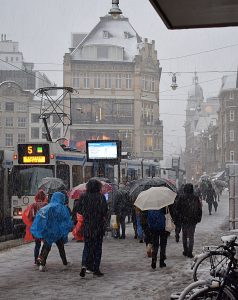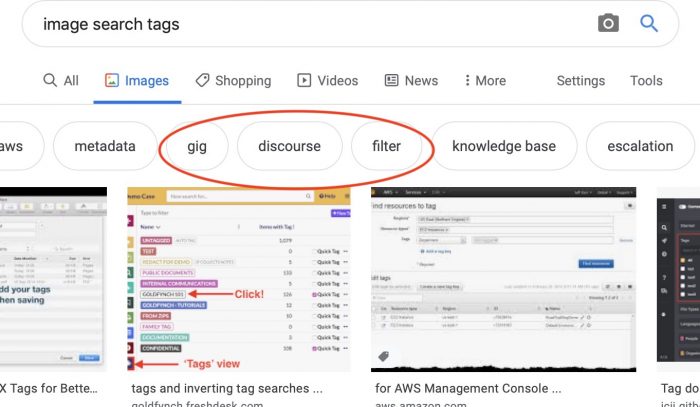Over the past decades, online marketing has become more and more visual. Images, banners, Instagram posts, and so many other forms of online communication are reliant on pictures and videos. Images are a lucrative resource but not many businesses know how to make the most of them. With a proper SEO image Strategy, you can make maximise their organic search potential and attract traffic where it counts.
Optimising your SEO image strategy maximises your potential on Google Search, Images Search, Google Lens, Photo and Assistant. These programs all allow users to find your visual resources far easier, as many users may not know what they’re looking for, but can identify how it looks. This opens an opportunity for a lot of marketing companies to improve their online presence with some fairly simple methods.
Basically, it allows for users to run visual searches to find what they are looking for. Companies are already leveraging image strategies, with names as big as Amazon promoting visual searches as a viable tool. Other companies like Walmart, Ikea, and Tommy Hilfiger are also following suit. As one may notice, these companies have products that would be well-served by image searches from consumers. It’s particularly useful for storefronts and fashion brands, where items can be easier to remember visually than by name.
In this article, we’ll look at what image SEO is and how your business can make the most of it. Let’s start with the basics…
Benefits of Image SEO

Most online content uses a blend of text and images to get its message across. While there is a lot of focus on the textual SEO aspect, people often overlook image SEO. Image search is a big draw for potential eyeballs on your page. Attracting users through their image queries can be an indirect way of boosting traffic or selling products.
Search engine responses for images provide a very different user interaction than the traditional SERP. The biggest difference is the format. Google Images doesn’t have pages but rather more like a timeline that almost goes on forever. Much like the main SERP, depending on the keyword, these pages can produce thousands of results. However, most people don’t look past the first page of Google and the results are limited to the first 10. Image searches can have 15 to 20 pages at first glance with far more space available for scrolling down.
Images also pop up on the first search engine response page, which can be very useful for attracting users. Suddenly, the text on the SERP is competing with images, and studies show it’s a losing battle for plain-looking words. Getting users to click on an image can be easier because they look glossier and can easily get across what they’re looking for. A picture is, after all, worth a 1000 words.
Image searches are a major source of Google’s daily clicks. If you’re not convinced, the numbers also speak for themselves. Sparktoro projects that Google Images holds around 20% of search engine market share. Google image searches make up for 1/10th of all Google traffic, with daily page views being over 1 billion. If that’s not reason enough to boost your image rankings, I can’t think of a better one.
SEO Image Strategy 101: Files Names
Firstly, the data that goes into your file upload matters. This is why you need to edit your file names and keep them more descriptive so that they stand out. The file name needs to strike a balance between the sticking to the keyword but also being specific enough that it meets more specific search terms.
Take the picture below as an example. If you are uploading a picture of Amsterdam, titling it “Amsterdam” will mean it will get lost in the shuffle. Getting more specific helps, so I titled it “Amsterdam-heavy-snow”. This allows it to stand out among the 100’s of other pictures of Amsterdam online and makes for more SEO-friendly images.

Sizes
Next, you need to enter alt data that is descriptive and includes the keywords you need. It improves your SEO and gives your image better search engine indexing and ranks. We went with “Amsterdam Snow 2017 Koningsplein”, which is a description of the time and place. On a more advanced level, consider altering the EXIF data and adding relevant info like the website name. This is also good advice in case of proving plagiarism.
Another important factor is file size. This refers to two different types of size: the dimensions of the image and how much storage space it takes up. There is a bit of a balancing act to this when optimising images. The dimensions have to be as large as possible, however, it should take as little storage space as it can. Google prefers images of at least 1200 pixels as a rule of thumb. Decreasing storage space is a good practice anyway as it helps website page speeds, which in turn helps your SEO. There are a lot of compression programs like Skitch that compress files and find the sweet spot in such instances.
Visual Search Enhancement Tips

Remember to properly tag images in your online storefront. Tags easily help Google categorise products and give suggestions to consumers. These suggestions also help catalogue your images in a wider category, making them easier to find. These can show up in the image search header underneath the search bar (as circled in the image above) or the related search boxes to similar products or searches. Aside from the title tag, another good image optimisation tip is to have schema available on your posts. For the run-down on schema, check out our previous article here.
Having content around an image also boosts its ability to appear on searches that go along with whatever users are looking for. This includes text around and under captions and page title tags. Similarly, anchor texts can boost the image as well. Anchor texts containing links with similar names to the image are a good idea for improving its visibility.
Depending on whether you want to boost local SEO, you can localise your file names and tags. Having location names in the image helps keep it fairly visible in related areas. Pictures that are related to the user’s location needs can thus show up far more easily and make use of geotags.
All of these tips make up the basics of SEO image strategy. Visibility for businesses is key online and, if used correctly, images can convey a lot more information than text. With an increasingly visual-based marketing landscape, it is important to adapt in all directions.


